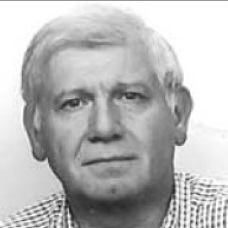Heterocyclic Chemistry in Europe
A special issue of Molecules (ISSN 1420-3049). This special issue belongs to the section "Organic Chemistry".
Deadline for manuscript submissions: 31 May 2024 | Viewed by 2038
Special Issue Editor
Interests: organic synthesis (Vilsmeier-Haack, Fischer indole,....); heterocycles; thiophenes and benzothiophenes; selenophenes and benzoselenophenes; coumarines; flavanoids; indoles; carbazoles
Special Issues, Collections and Topics in MDPI journals
Special Issue Information
Dear Colleagues,
Heterocycles are defined as “Carbocycles containing at least one heteroatom”. With this definition, it is easy to understand that examples of this type will be numerous. For example, for those who are familiar with the Chemical Abstracts in the paper version, they will remember that, in the Heterocycles section, the first to appear were epoxides. In Europe and all over the world, heterocycles are certainly the most studied organic compounds. Aromatic or non-aromatic, benzocondensed or not, monoheteroatomic or polyheteroatomic, the possible variety of compounds were studied to prepare a new synthesis, to develop compounds for specific properties in medicinal chemistry or material science. Additionally, many natural compounds are part of the different classes. This Special Issue will focus on the synthesis of heterocyclic compounds of all types. Heterocycles used as intermediates for the construction of more complex molecules (as developed by Boger, Padwa…) are welcome in this Special Issue.
Dr. Gilbert Kirsch
Guest Editor
Manuscript Submission Information
Manuscripts should be submitted online at www.mdpi.com by registering and logging in to this website. Once you are registered, click here to go to the submission form. Manuscripts can be submitted until the deadline. All submissions that pass pre-check are peer-reviewed. Accepted papers will be published continuously in the journal (as soon as accepted) and will be listed together on the special issue website. Research articles, review articles as well as short communications are invited. For planned papers, a title and short abstract (about 100 words) can be sent to the Editorial Office for announcement on this website.
Submitted manuscripts should not have been published previously, nor be under consideration for publication elsewhere (except conference proceedings papers). All manuscripts are thoroughly refereed through a single-blind peer-review process. A guide for authors and other relevant information for submission of manuscripts is available on the Instructions for Authors page. Molecules is an international peer-reviewed open access semimonthly journal published by MDPI.
Please visit the Instructions for Authors page before submitting a manuscript. The Article Processing Charge (APC) for publication in this open access journal is 2700 CHF (Swiss Francs). Submitted papers should be well formatted and use good English. Authors may use MDPI's English editing service prior to publication or during author revisions.
Keywords
- non-aromatic heterocycles
- aromatic heterocycles
- benzo-condensed heterocycles
- mesoionic heterocycles
- natural heterocycles
- synthesis
- reactivity






